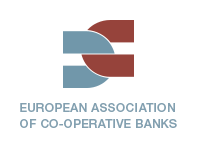The EACB welcomes the opportunity to participate in the ESMA consultation paper on integrating sustainability risks and factors in MiFID II. Co-operative banks are key players in sustainable finance and the EACB has actively been contributing to the various work streams on the topic. Indeed we have a representative on the European Commission’s Technical Expert Group on sustainable finance (TEG) and were among the 17 early supporters of the UNEP FI Principles for Responsible Banking.
Our members also provide portfolio management and investment advice, which are the activities within scope of the Commission call for technical advice to ESMA and EIOPA back in July 2018. Therefore, as credit institutions providing portfolio management and investment advice but at the same time being subject to sustainable finance requirements under banking regulation, we wish to provide our point of view on integrating sustainability when providing the above services.
As a general comment, the EACB is supportive of the high-level principles-based approach by ESMA in its consultation paper because at this point in time, there does not exist sufficient clarity on current definitions and concepts related to sustainable finance (as well as a lack of historical and standardised data) due to the taxonomy not being completed. Notwithstanding the above, our opinion is that in some cases (particularly in relation to product governance and suitability, and keeping in mind the impact of the proposals on distributors of the financial products in scope) even the high level amendments being made by ESMA may be too forward-looking and should be withheld until the taxonomy is in place.
Further uncertainty can be seen in the case that the taxonomy is finalised sooner than anticipated, it will still only focus on the ‘E’ in ESG. On the other hand, the proposals being made by ESMA in relation to integrating sustainability within the investment management and advisory process appear to also focus on the social and governance factors.
We caution against certain changes but we still endeavor to provide suggestions for ESMA to better clarify certain issues on:
Scope: Further to the confusion on definitions used even at Level 1 of the sustainable finance legislative package, there also exist scope issues between the taxonomy and disclosures proposal that have direct consequences on the application of amendments to MiFID II, especially in relation to product governance and suitability assessment requirements.
Definitions: In terms of definitions, we call for more clarity and consistency in the use of terms between the MiFID II proposed amendments and the changes being suggested in the ESMA Consultation paper on integrating sustainability risks and factors in the UCITS Directive and AIFMD e.g. the MiFID II consultation refers to ESG risks whilst the AIFMD/UCITS Directive paper refers to sustainability risks. Clarification on the difference between ESG preferences, ESG factors and ESG considerations would also be appreciated.
Timing and costs: Possible application of transitional provisions in ESMA’s final report is very much linked to timing and cost issues for our members, especially in the case that the proposed amendments to product governance and suitability requirements are approved and enter into force. Since there are no grandfathering provisions proposed with respect to updating of client profiles for the suitability assessment and product governance amendments (should these be approved), it would be beneficial that ESMA confirms whether there would be a cut-off date to application of client profiles/financial products, and if not, when the applicable provisions would apply in any case e.g. before the next investment advice given to the client. Indication of timing of application is also important and we suggest at least 18 months from date of entry into force for all Level 2 measures which are necessary to interlink the rights and obligations of the manufacturers and the distributors, including but not limited to the delegated directive (product governance) to become applicable.
Transitional provisions and timing issues may impact entities in scope as only recently have several companies undergone lengthy procedures and heavy costs to update systems and client profiles due to MiFID II, and not to mention the standardisation work on MiFID II data exchange between manufacturers and distributors that is still under development. Companies need some time before they can update everything again and if there is no cut-off provisions then the costs could really run high. Considering that the taxonomy is not in place either, then these entities may need to update client profiles and systems once more in order to be compliant. This is a double cost-burden that should be avoided and is also a case for not introducing Level 2 sustainability measures on MiFID II for the time being until the taxonomy is finalised.


